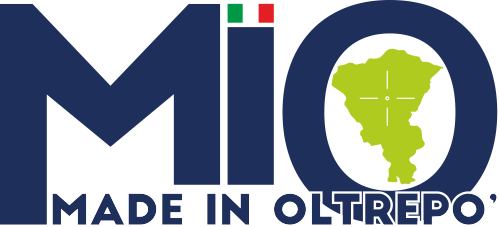With the grape harvest now almost at an end in the Oltrepò Pavese, a new chapter begins for the grapes: the path that will lead them to be transformed into wine. This process, apparently invisible to the eyes of most, is fundamental for enhancing the characteristics of the grapes grown in this historic territory and transforming them into quality wines. Let us discover together the main stages that follow the harvest, a fascinating journey that starts in the vineyard and arrives at the wineglass.
Once harvested, the grapes are taken to the cellar, where the first stage of the process begins: pressing. In this phase, the grapes are broken to release the must, a sugary liquid that will be the basis of the wine. The crushing can be done in the traditional way, with manual techniques, or with the use of modern machinery. In any case, the aim is to ensure that the grapes retain their natural characteristics intact, favouring the extraction of the aromatic compounds that will give personality to the wine.
After crushing, the must, skins and seeds are left together in a phase called maceration. This step is particularly important for red wines, as the grape skins release colour, tannins and aromas that are essential for the structure of the wine. The duration of maceration can vary depending on the type of wine to be made: in the case of red wines, it can last several weeks to achieve greater colour and complexity, while for white wines, which need to maintain freshness and lightness, contact with the skins is generally shorter.
In the Oltrepò Pavese area, famous for its red wines such as Barbera and Pinot Noir, maceration is a crucial phase to enhance the distinctive characteristics of these grapes, making them rich in body and fragrance.
Fermentation is the heart of the winemaking process. It is at this stage that the yeasts, naturally present on the skins or added by the winemaker, transform the sugars in the must into alcohol and carbon dioxide. It is a process similar to the rising of bread: just as yeast transforms raw ingredients into a fragrant product, here the yeasts transform the must into wine.
Fermentation can take place in steel tanks, wooden barrels or even terracotta amphorae, and each material contributes to the wine‘s specific character. A crucial element during this phase is temperature control: if fermentation takes place at too high a temperature, the most delicate aromas are lost, while too low temperatures slow down the process and can prevent the full expression of the aromatic bouquet.
The type of yeasts used in fermentation has an enormous influence on the final result. Some winegrowers in the Oltrepò Pavese choose to let the process take place naturally, using the spontaneous yeasts present on the grape skins, which can give the wine a wilder, terroir-related character. Others prefer to select specific yeasts to ensure greater predictability and control over the wine‘s aromatic profile. Both techniques have their merits, and the choice depends on the style the producer wants to achieve.
Each stage of the process has its own precise timing and respecting it is essential to obtain a balanced and complex wine. Maceration, as we have seen, can last from a few days to several weeks, depending on the type of wine. Fermentation, on the other hand, usually takes 7 to 14 days, but can vary depending on the temperature and the type of grape.
After fermentation, the wine can be aged in wooden barrels or steel tanks, where it remains for several months or even years, developing further complexity and rounding off the tannins. It is at this stage that the wine stabilises and matures, ready to be bottled and enjoyed.
In the Oltrepò Pavese, each harvest is an opportunity to express the richness of the territory through wine. This corner of Lombardy, with its hills and favourable microclimate, is known for the production of high quality wines, such as Bonarda, Pinot Noir and Riesling. Each producer, with his own techniques and stylistic choices, contributes to creating a variety of wines that reflect tradition, but also continuous innovation.






















